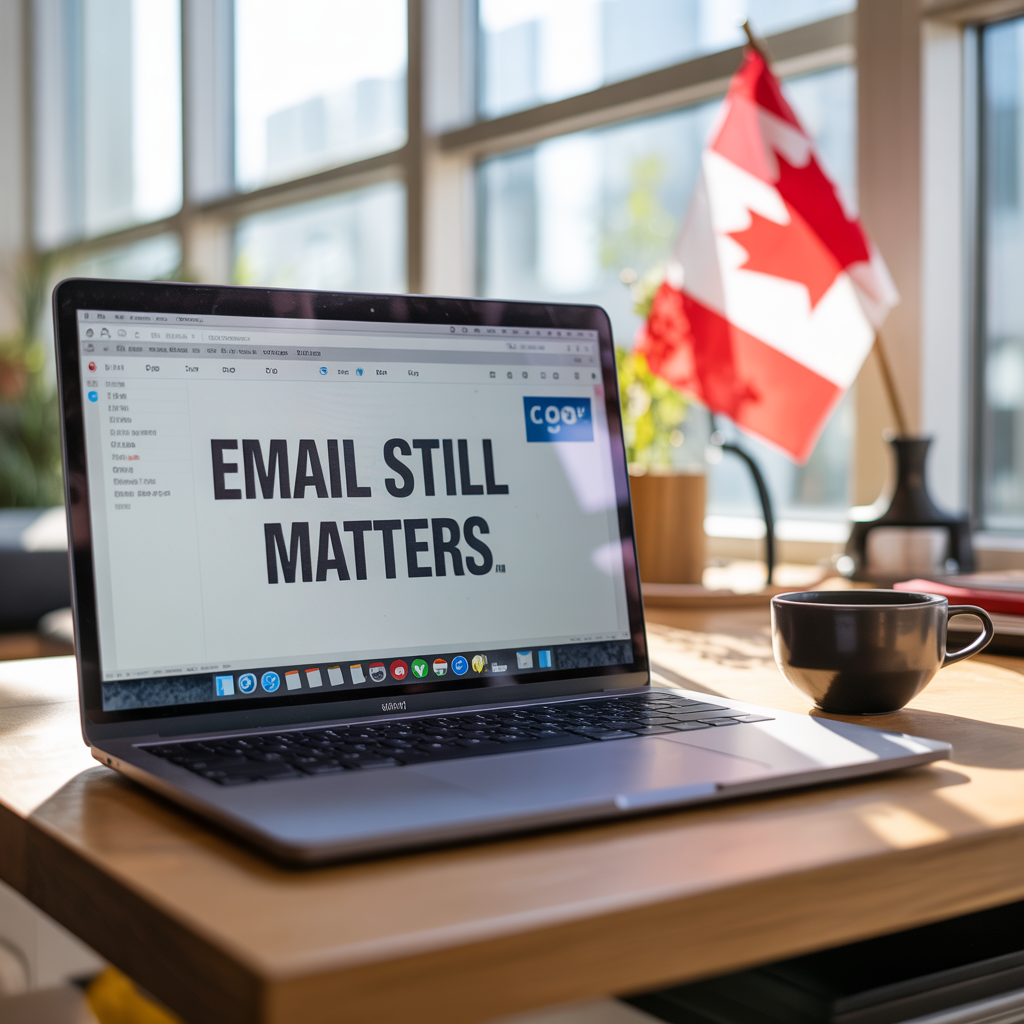Monday, December 08, 2025
Monday, December 08, 2025

by Erin Beattie:
We have all heard the same pitch. New tools. Instant updates. AI everything. It’s easy to feel like email is outdated or less useful than the faster, flashier ways we communicate today.
But that is not the whole story. A recent global survey published by Business Wire found that more than half of critical business communications still occur over email. Not chat. Not shared docs. Not project platforms. Email.
For many of us working in Canadian organizations, that makes perfect sense. Email continues to offer something that many other tools do not. Clarity. Accountability. Structure. And in sectors where privacy and compliance are important, these things are not optional.
The full 2025 State of Email Report by Exclaimer delves deeper into the numbers, but for those of us working in communication, governance, or leadership roles, the takeaway is familiar. Email still matters. Maybe more than ever.
We have previously shared our thoughts on AI in communication. In our piece on why AI will not replace human communicators, we discussed its limitations. In our post about AI’s environmental impact, we examined what is overlooked when efficiency becomes the sole goal.
The same perspective applies here. Email may not be the most exciting tool, but it provides us with something we still need.
A time-stamped, traceable record
A clear sender and recipient chain
A way to document decisions and reduce confusion
It also gives people space to pause, reflect, and respond with care. In a world full of fast-moving messages and auto-generated content, that pause still matters. We might argue that it matters now more than ever.
Email also supports accessibility and inclusion when designed with intention. For neurodivergent team members, individuals with disabilities, or anyone who processes information more effectively in writing, email can provide the clarity and time they need to fully engage.
And there are moments where email still matters because the message itself needs a human touch. When we are delivering difficult news, offering context for a decision, or navigating conflict or change, AI is not the right fit. Those messages need to come from a real person with real care.
Back in 2012, I recall hearing conversations about how social media was beginning to transform the way we work. Paul Stokes, then CIO at the University of Victoria (UVic), spoke about the shift happening under the surface. Around the same time, I kept hearing an old expression go around. “The tail wags the dog.” It tends to resurface whenever a tool begins to be perceived as wielding more power than the people using it.
Fast forward to today, and the conversation has shifted again. This time, it is about AI. Once again, the tools are outpacing our systems and policies. The volume is louder. The pressure to respond quickly is back. And the risk is the same. We lose the clarity we actually need.
In 2016, during my Master of Arts in Professional Communication (MAPC) program at Royal Roads University (RRU), the phrase “the medium is the message” kept surfacing in David Black’s class. It was not just theory. McLuhan believed that how we communicate changes the meaning itself. The tool we use shapes how the message lands. And it changes us in the process.
There is a short 2015 video, narrated by Gillian Anderson, that unpacks this idea beautifully. It asks, is the form you receive a message in as significant as the message itself? McLuhan would say yes. Communication tools do not just deliver information. They shape how we understand each other, how we relate to one another, how we work, and how we make sense of the world.
Email, in that context, is more than just a habit. It is one of the few channels that still supports careful, documentable, human-centred communication. Especially when used with intention.
In Canada, privacy legislation, such as the Personal Information Protection and Electronic Documents Act (PIPEDA), the Freedom of Information and Protection of Privacy Act (FIPPA), as well as other provincial frameworks, requires more than just good communication. They require records. Secure systems. Documentation that can be revisited and reviewed. For teams working in healthcare, education, finance, or government, email is still the thread that ties these expectations together.
That said, not everyone is sitting at a desk. In many organizations, front-line staff rely on printed notices, team huddles, mobile messaging apps, or informal channels to get the information they need. These approaches matter too, and they deserve the same care, clarity, and consistency we give to digital channels. Communication should be accessible, no matter the role or shift.
It is also worth asking who is being heard and who might be left out. Tools like email can support inclusion, but only if we create room for different communication styles and lived experiences. One-way communication may be efficient, but it rarely builds trust. Meaningful communication is relational, not just transactional.
It is about relationships. Systems. Power. Inclusion. Culture. The decisions we make about where and how we communicate reveal to others what matters and who matters.
Email is not a step backward. It is a channel that invites us to slow down just enough to be thoughtful. To document decisions. To ask good questions. And to build trust, one message at a time.
If your team is exploring new communication tools, revisiting internal workflows, or navigating the adoption of AI, we would be glad to support that work. These are not just technical choices. They are human ones.
Here are five things I encourage Canadian organizations to explore when rethinking the role of email.
Written by: Editor
© 2025 Stratpair Ltd., trading as Strategic. Registered in Ireland: 747736